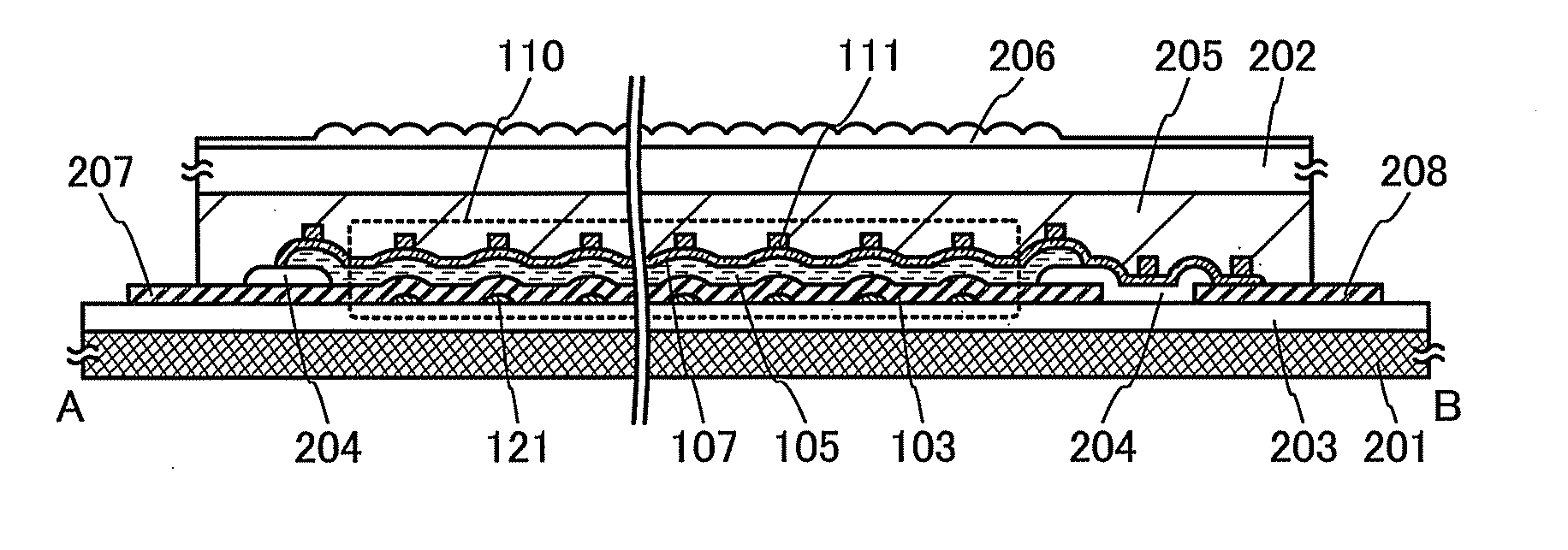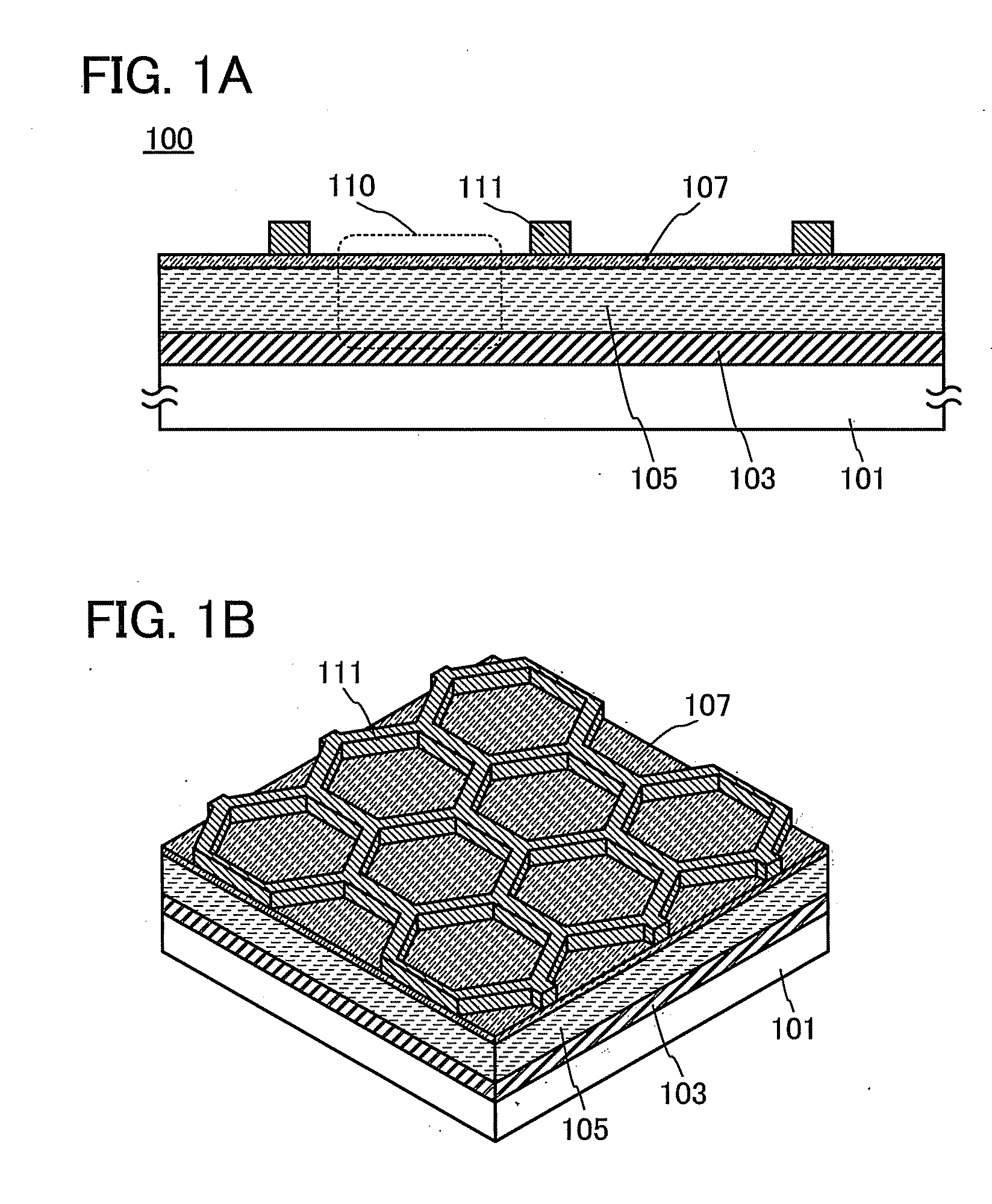Light-Emitting Device and Manufacturing Method Thereof
- Summary
- Abstract
- Description
- Claims
- Application Information
AI Technical Summary
Benefits of technology
Problems solved by technology
Method used
Image
Examples
embodiment 1
[0059]In this embodiment, a structure example of a light-emitting device according to one embodiment of the present invention and an example of a manufacturing method thereof will be described with reference to drawings.
[0060]A schematic cross-section of a light-emitting device 100 which is one embodiment of the present invention is illustrated in FIG. 1A.
[0061]The light-emitting device 100 includes a light-emitting element 110 in which a first electrode layer 103, an EL layer 105, and a second electrode layer 107 are stacked in this order over a first substrate 101 having an insulating surface. Further, an auxiliary wiring 111 is provided on and in contact with the second electrode layer 107.
[0062]The first electrode layer 103 has reflective properties with respect to light emitted from the EL layer 105. The second electrode layer 107 has light-transmitting properties with respect to the light. Thus, the light-emitting element 110 is a top-emission type light-emitting element which...
embodiment 2
[0112]In this embodiment, a structure example of a light-emitting device which is different from the structure in the above embodiment is described with reference to drawings. Note that description of, the same portions as those in the above embodiment is skipped or simplified below.
[0113]FIG. 4A is a schematic cross-sectional view of a light-emitting device 120 exemplified in this structure example.
[0114]The light-emitting device 120 is different from the light-emitting device 100 in the above embodiment in that an auxiliary wiring 121 (also referred to as second auxiliary wiring) overlapping with the auxiliary wiring 111, when seen from the direction perpendicular to the insulating surface of the first substrate 101, is provided between the first electrode layer 103 and the first substrate 101.
[0115]The conductive material similar to that used for the auxiliary wiring 111 can be used for the auxiliary wiring 121.
[0116]The first electrode layer 103 is provided to cover the auxiliar...
modification example
[0132]A light-emitting device whose structure is different from the above structure example is described below.
[0133]FIG. 5 is a schematic cross-sectional view of a light-emitting device 140 described in this modification example. A difference between the light-emitting device 140 and the light-emitting device 120 is in that the light-emitting device 140 includes an insulating layer 125 with projections and depressions instead of the auxiliary wiring 121.
[0134]The upper surface of the insulating layer 125 which is in contact with the first electrode layer 103 has projections and depressions. The upper surface of the first electrode layer 103 has projections and depressions reflecting the shape of the insulating layer 125.
[0135]Thus, the upper surface of the first electrode layer 103 has projections and depressions also in a region not overlapping with the auxiliary wiring 111; thus, the ratio of the diffusely-reflected light to the whole light emitted from the EL layer 105 can be in...
PUM
 Login to View More
Login to View More Abstract
Description
Claims
Application Information
 Login to View More
Login to View More - R&D
- Intellectual Property
- Life Sciences
- Materials
- Tech Scout
- Unparalleled Data Quality
- Higher Quality Content
- 60% Fewer Hallucinations
Browse by: Latest US Patents, China's latest patents, Technical Efficacy Thesaurus, Application Domain, Technology Topic, Popular Technical Reports.
© 2025 PatSnap. All rights reserved.Legal|Privacy policy|Modern Slavery Act Transparency Statement|Sitemap|About US| Contact US: help@patsnap.com



